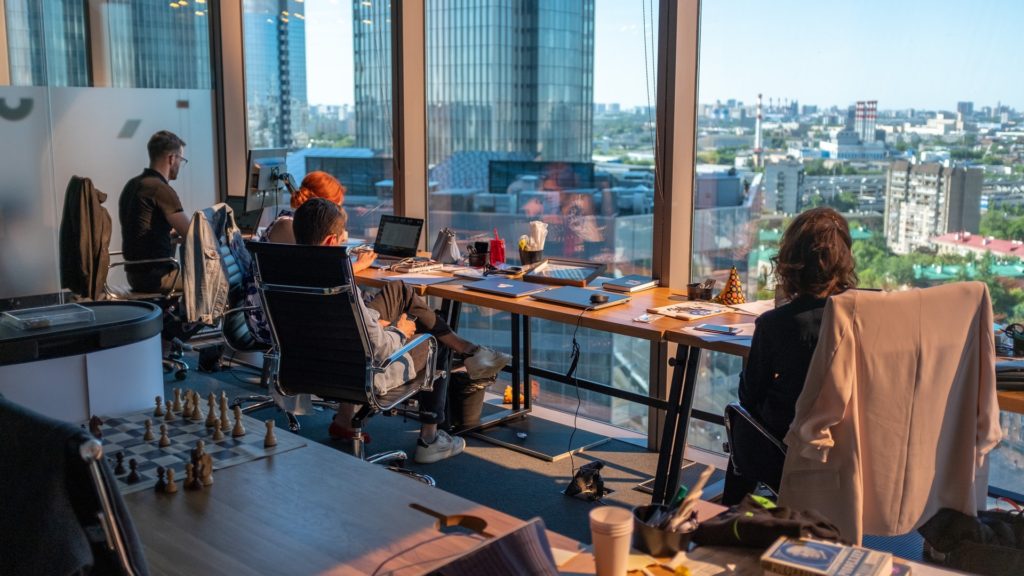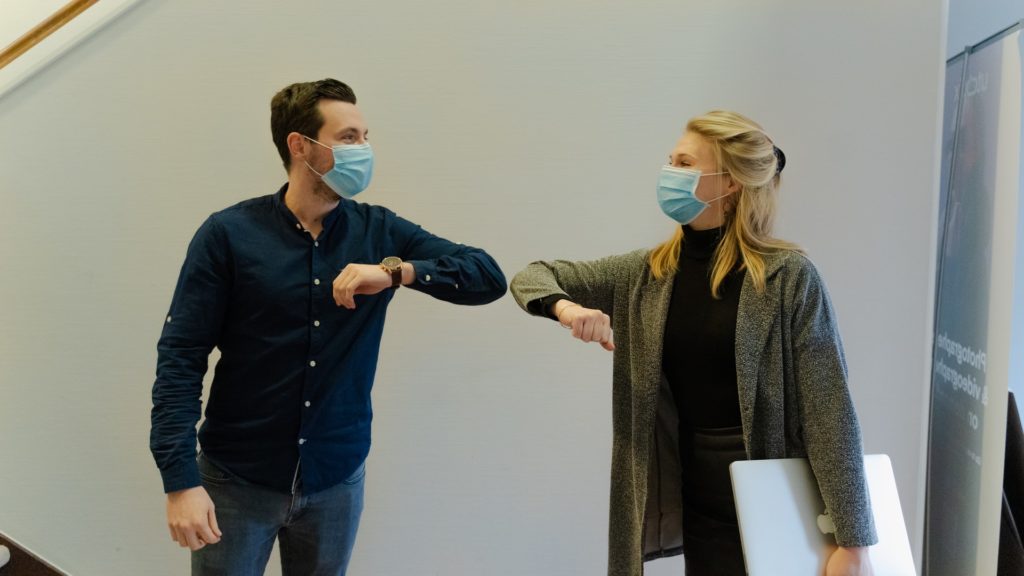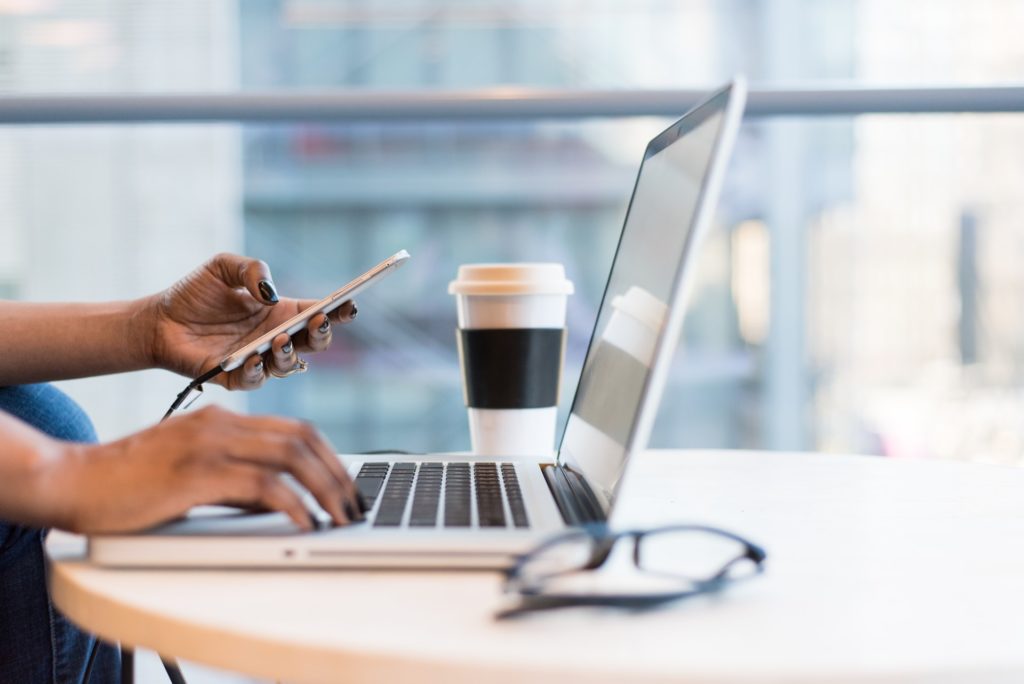Here’s what to expect from the “new normal”
It’s no secret the pandemic forced many offices to shut down. Employers scrambled for solutions, and working from home became the norm. Now as we find our way toward a “new normal,” the debate between a full return and fully remote has begun.
With over 80 percent of companies opting for a three-day hybrid approach, it’s fair to say corporations are splitting the difference. Most of the workforce can expect to return to the office in some form. But truth is, the office has changed and going back will look a little different.
Whether you’re enjoying your newfound WFH flexibility or you’re itching to get back to the workplace, here are a few tips for what to expect and how to make the most of returning to the office.
The lean version
- Splitting the difference. Most corporations are moving toward a three-day hybrid work week, which means most (outside of tech) will be returning to the office.
- Social un-distancing. With loneliness skyrocketing during the shutdowns, reconnecting to colleagues is one of the biggest motivators for going back to the workplace.
- Awkward greetings. A common workplace side-effect of having little to zero human interaction.
- Hoops to jump through. COVID safety protocols take some getting used to. You might be subject to temperature checks, new sanitation practices, and staggered workstations.
- What do you mean I can’t wear PJs? The biggest drawback for remote workers is returning to the commute. To make the most of it, listen to audiobooks, call a friend, or brush up on your hobbies (like singing or practicing a language).
Optimizing your morning commute

In a recent survey, 84% of workers said not having to commute is the top benefit of remote work. Makes sense — who wants to spend their mornings on public transit or sitting in rush hour traffic?
The beauty of working from home is that your “commute” usually consists of the distance from your bed to your desk, with a quick pitstop in the kitchen for a morning brew.
So, it’s not just the inconvenience, it’s the time. The average commute is about 30 minutes each way. Losing that extra hour might not seem like much, but it adds up.
Plus, your brain power is usually at its peak within the first two hours of waking up. Instead of throwing it away stressing about traffic or slumped down on the train, reframe it as “me time”.
Time to focus on what helps you progress personally, mentally, or emotionally. Or, just time to catch up on the stuff you wish you had more time for. Here are a few ideas for making the most of your commute:
1. Create a “smart” ride
You know those books sitting on your shelf? The ones that make you feel guilt every time you ignore them? A simple solution is to listen to them on audio during your morning drive or ride.
It might seem oversimplistic but once you do the math, you’ll realize it’s an absolute gamechanger for optimizing your time and feeding your mind.
If you listen to an audiobook for just 30 minutes a day (half the average commute), you’ll plow through about 33 books per year (i.e., an extra 1,300 books in your lifetime). Imagine actually getting to finish the books you promise yourself you’ll read. If you’re busy, it’s a no-brainer.
Podcasts are a good option too. If you need some recommendations, give these a shot:
- Daily Living Optimized
- A Bit of Optimism
- The One You Feed
- The Tim Ferris Show
- The World That Wasn’t
- Optimal Finance Daily
- The Aubrey Marcus Podcast
2. Pour into your passions
Odds are you’ve got certain skills or hobbies you’d like to practice but somehow never have time for. So, why not add them to your morning drive or metro ride?
Naturally, some skills are more practical than others when it comes to your commute. Your cello, for example, might need to stay home. But, if you’ve been wanting to get better at singing, or more fluent in Japanese, train on the way to work.
Put on a playlist that lets you practice your scales or a little Rosetta Stone to improve your vocab. Either way, having uninterrupted time to invest in what personally fulfills you will help you better adapt to a new work-life balance.
3. Carpool conversations
As more of your schedule gets eaten up by work, a growing family, personal goals, and other responsibilities, it can be easy to neglect one of your most valuable assets: friends.
Few would argue that they invest into their friendships as much as they believe they should.
Curiously, one of the biggest deathbed regrets is not staying in touch with friends.
If you’re a “morning person,” you can use your commute to reconnect and catch up. Nothing makes a drive fly by like a great conversation, and nothing benefits your mental health like healthy relationships.
Not sure how to break the ice? Use the F.O.R.D. method. Ask about family, occupation, recreation and dreams.
What’s up at the office?

It goes without saying: Every office will be different. For many, the return to the workplace carries some anxiety. Is it really safe? Can I afford to risk getting sick? What about those less “air flowy” areas? At most workplaces you can expect to deal with some safety protocols.
For instance, at our Fresh N Lean office, temperature checks are commonplace and hand sanitizer flows like honey. And even though everyone in our department is vaccinated, some still wear masks because it makes them feel more comfortable. At our new HQ, we also have much more space for those who want to social distance.
Other companies are staggering workstations, opening up outdoor areas, or keeping cubicles intact but limiting in-person meetings to a minimum.
What we know for sure is that the role of the office is evolving. As you head back to work, you can expect more flexibility, but also a few more hoops to jump through as the dust settles.
Social un-distancing

After a year of isolation, one of the most widespread side-effects of the lockdowns was loneliness. In a recent survey, 36% of millennials reported feeling lonely almost all the time or all the time.
While working from home offers incredible benefits, being together matters. According to neurosurgeon and notable journalist Dr. Sanjay Gupta, a vibrant social life is essential to prevent cognitive decline and can increase your lifespan by up to five years.
As our world inevitably becomes more digitized, it seems our relationships should be one of the few aspects that remains analogue.
For some employees, being in close quarters with coworkers will induce anxiety. For most, however, reconnecting and socializing with colleagues is the chief motivator for coming back to the office.
There’s only so many choppy Zoom calls you can take before fatigue sets in. And, you do lose some natural collaboration and connection through a computer screen.
Another pandemic side-effect? Awkward greetings. It’s likely you’ll do that clumsy dance between a high-five, handshake, and elbow…pound (?) when interacting with co-workers. But, given that we’ve all gone through a world-changing event, a little unexpected aftermath comes with the territory.
Distraction…free?

The flexibility of working from home usually means distractions are limited to your cat, your kids or the endless construction at your neighbor’s place. After tasting the chaos of homelife, over 50% of the workforce say they can’t wait to get back to the office.
While studies have shown that productivity is actually higher among remote workers, part of the employee push to return to the office might be due to the blurred lines between work and personal life. It can be tough to maintain a work-life balance when they’re both plugged into the same computer.
Even so, the office has its own share of distractions. It might not be fending your pet off your laptop, but you’ll have to contend with a few familiar interruptions. Small annoyances like co-workers knocking on your door, stomping down the hallway, or chiming in and disrupting your workflow are common, but nothing a set of noise-cancelling headphones can’t fix.
Either way, returning to the office will take some getting used to. The world has changed and the office with it, but with a few adjustments a hybrid work week might be better than you think.



